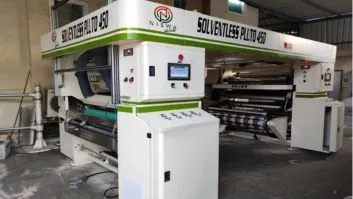The demand for packaged food and snacks has grown exponentially over the past decade riding high on consumer awareness forwards eating fresh and hygienic food products. A boom in the organized retail and e-commerce industries has also propelled the growth to unprecedented levels. Furthermore, the Covid19 pandemic has forced the consumers to become more hygiene-conscious and as a result, many food and snacks that were sold in loose have now been packaged.
The packaging industry has been moving towards flexible packaging due to the myriad benefits and advantages it offers. Brands have gone for innovative packaging techniques to ensure the freshness of their products and also to use aesthetics as a branding tool to attract consumer attention. Packaging thus has become a benchmark for quality and a differentiation tool among the wide choice of products available on the shelves.
High moisture barrier films, gas and vapor barrier films, metalized and corona treated and laminated as per the product requirement provide for the desired packaging of chips, chocolate & chocolate cookies, cream biscuits, salted & roasted dry fruits, and a variety of dried, salted, roasted, or baked snacks and desserts. R&D on higher barrier materials is continuously developing and the converters are using different web mixes to configure the perfect lamination structure solution that the brands need.
While print protection is still a primary reason to laminate, the attention nowadays is significantly shifting toward product protection. With a larger number of players, the marketing triggered a faster trend in packaging innovation, as a result of which the brands and converters are focusing on alternative and increasingly interesting ways to develop new solutions to extend the shelf life of packaged food, increase protection of the non-food product and so on.
Flexible packaging makes use of plastic, paper, and aluminum foil, without compromising on the barrier protection, durability, printability, and ease of use to deliver fresh products with longer and extended shelf lives. This packaging is thus beneficial from all aspects of the supply chain as well, i.e. lightweight, cost-effective, easy to transport and use, which overall makes it the most versatile form of food, snacks, and beverage packaging.
Lamination is thus the most important process in the whole film conversion chain. The lamination industry has seen numerous innovations in the last 2-3 decades. The quest in on to effectively implement multi-ply laminators to laminate multiple web structures in the least possible number of passes, the ability to efficiently laminate thin films, and the development of metalized webs with better barrier performances. Along with these, the focus is also on the gear pump-driven meter mixer dispenser, more precise torque and speed control through drives & automation, and energy efficiency.
Market and customer expectations demand continuous improvement, and technology has reached such a level that innovation in lamination machines is almost always the combined effort of the converter, the films or substrates manufacturer, the machinery manufacturer, the mechanical components manufacturer, the adhesive manufacturer, and the manufacturer of pneumatic, hydraulic, and electronic automation components.
For a converter and also a converting machinery manufacturer, especially a Solventless Lamination machine OEM, knowing the application is very important and is the starting point to designing, manufacturing, and proposing a machine to the market.
The preliminary analysis of the converter’s requirement involves understanding the application for the laminated compound, the mechanical characteristics of the machine, the barrier characteristics required, the thermal treatment, the nature of the product to be packed, and the shelf life required. This first stage analysis will help in the selection of the substrates to be laminated and their thickness and the lamination process that may better do it. Further, to decide the level of automation in the lamination machine, it is important to know the length of the average run. This helps to better understand the setup of unwinding and rewind and the production (machine) speed. The right and relevant adhesive technology will depend on the local emissions restrictions.
It is also important on the part of the Lamination machine manufacturer to properly train the operators deployed on the converter’s production unit. This will help save films, adhesives, energy, and ultimately the breakdowns.
Niswa Engg Solutions India Pvt. Ltd. has in the recent past delivered a number of lamination machines in the market. These include solvent-less laminators, dry & wet laminators, and also solvent-base laminators. There are a few export orders as well in the manufacturing pipeline. With an extensive focus on designing and manufacturing high-end, durable, and reliable converting machines, Niswa Engg Solutions has gone into downward vertical integration to gain quality and cost control on certain critical components, which also include automation components.
Solventless lamination machines or solvent-based lamination machines are going to be the key technological offerings of Niswa Engg in the near future. The designers at Niswa focus on the modularity of the design and the smooth integration of components as these will have a direct impact on machine reliability, performance, safety, user-friendliness, and ease of maintenance.

